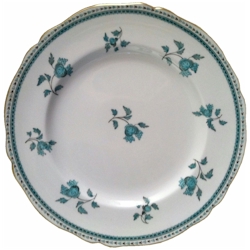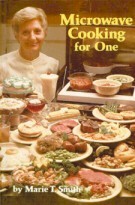
Darlington Fine China by Spode
The original Darlington pattern was introduced in 1941 on bone china on Hamburg shape. It was a version of a pattern called Acorn Sprigs (or Acorn Sprays) — although the design does not seem to have anything to do with acorns. The style of the pattern is reminiscent of those of the early 1800s with scattered buds or leaves, known as sprigs, over the surface. In the Darlington version of the design the sprigs are printed in black and then hand colored in a turquoise known as peacock blue with a gold edge. A leaflet for 1957 describes the as follows: A clear turquoise, a sharp black and gold against the background of the lively white of Spode Bone China give Darlington distinction and charm. The subtle turquoise combines agreeably with other colours, making Darlington an easy pattern to use in a great variety of interesting table settings. The decoration in motif ... makes the pattern equally appropriate for homes of Contemporary and Traditional types.
Spode Darlington was produced from 1941 to 1972 in several choices of color. The gold trim on this pattern means it is not safe for use in the microwave. If you need replacement or additional pieces for your collection of Spode Darlington, monitor this page on a weekly basis for new listings.
If the item you are looking for is not listed, then bookmark this page and check back each week!
Eventually, your item should show up for sale.
When it comes to finding Spode that is difficult to find in stores near you, one of your best resources for acquiring the items you want are sites like Amazon, Etsy, Replacements and eBay, where there are a lot of wonderful finds still in the original boxes. We all receive those odd items as gifts that we have no need for and never use. Yet, one person's junk could be exactly the treasure you want.
Please Note: Not all Spode is safe for use in the microwave. Patterns with gold or platinum decorations around the rim should not be used in your microwave because microwaves can not pass through metal. If in doubt, use this simple test: Is this Utensil Safe for the Microwave?


SHARE THIS PAGE: